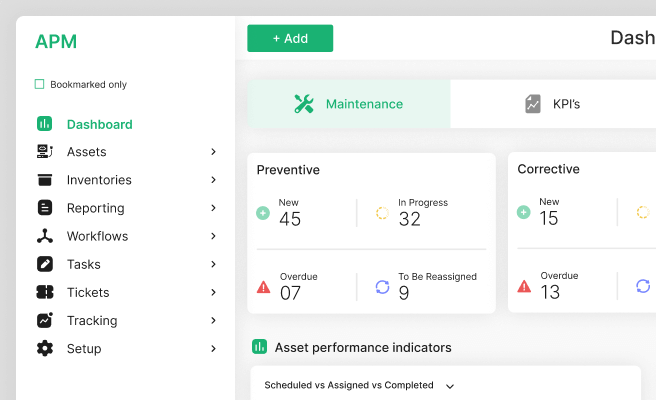Touchpoint
<p>A touchpoint refers to any interaction or encounter a customer has with a brand, product, or service throughout their customer journey. These interactions can occur across various channels, including online platforms, physical stores, customer service, and social media. Understanding and optimizing touchpoints is crucial for businesses aiming to enhance the customer experience and build long-term relationships.</p>
<p>Historically, touchpoints have evolved with advancements in technology and shifts in consumer behavior. Originally limited to physical interactions, touchpoints now encompass a wide array of digital interactions, reflecting the increasingly omnichannel nature of modern commerce. This evolution underscores the importance of a cohesive strategy to manage and optimize touchpoints across all channels.</p>
<h2 id="importance-of-touchpoints">Importance of Touchpoints</h2>
<p>Touchpoints play a critical role in shaping a customer's perception and experience with a brand. They influence customer satisfaction, loyalty, and ultimately, business success. Effective management of touchpoints can lead to:</p>
<ul>
<li>Improved customer satisfaction by meeting or exceeding expectations at each interaction.</li>
<li>Increased customer loyalty through consistent and positive experiences.</li>
<li>Enhanced brand reputation as customers share their positive experiences.</li>
<li>Higher conversion rates by guiding customers smoothly through their journey.</li>
</ul>
<h2 id="identifying-and-optimizing-touchpoints">Identifying and Optimizing Touchpoints</h2>
<p>To effectively manage touchpoints, businesses should:</p>
<h3>Map the Customer Journey</h3>
<p>Identify all potential touchpoints from the initial awareness stage to post-purchase interactions. This comprehensive mapping offers insights into where customers interact with the brand and highlights opportunities for improvement.</p>
<h3>Gather Customer Feedback</h3>
<p>Solicit feedback through surveys, reviews, and direct interactions to understand customer experiences at different touchpoints. This data helps in identifying pain points and areas that need enhancement.</p>
<h3>Implement Consistent Branding</h3>
<p>Ensure that branding, messaging, and customer service are consistent across all touchpoints. Consistency builds trust and reinforces the brand's identity. For example, Apple maintains a consistent brand experience across its website, retail stores, and support services.</p>
<h3>Utilize Technology</h3>
<p>Leverage tools such as <a href="https://www.salesforce.com/products/service-cloud/overview/" style="color: #2896FF; text-decoration: underline;">Salesforce Service Cloud</a> or <a href="https://www.hubspot.com/products/service" style="color: #2896FF; text-decoration: underline;">HubSpot Service Hub</a> to manage and optimize touchpoints efficiently. These platforms provide comprehensive solutions for tracking customer interactions and improving service delivery.</p>
<h2 id="case-study-in-climate-tech">Case Study in Climate Tech</h2>
<p>Consider a deep-tech climate-tech company specializing in carbon capture technology. The company might have multiple touchpoints, such as:</p>
<ul>
<li>Website: Offering detailed information about their technology and its environmental impact.</li>
<li>Social Media: Engaging with customers by sharing success stories, industry news, and sustainability tips.</li>
<li>Customer Service: Providing support through chatbots, email, and phone to address inquiries and issues.</li>
<li>Events: Participating in industry conferences and webinars to showcase their innovations and connect with partners.</li>
</ul>
<p>By optimizing these touchpoints, the company can effectively communicate its impact, build credibility, and foster strong relationships with stakeholders.</p>
<h2 id="challenges-in-managing-touchpoints">Challenges in Managing Touchpoints</h2>
<p>While managing touchpoints offers significant benefits, it also presents challenges, such as:</p>
<ul>
<li>Ensuring consistency across diverse channels.</li>
<li>Integrating data from various touchpoints for a unified view of the customer.</li>
<li>Keeping up with evolving customer expectations and technological advancements.</li>
</ul>
<h2 id="overcoming-challenges">Overcoming Challenges</h2>
<p>Businesses can address these challenges by:</p>
<h3>Investing in Integrated Systems</h3>
<p>Adopt integrated customer relationship management (CRM) systems that consolidate data from all touchpoints, providing a holistic view of the customer journey.</p>
<h3>Training and Development</h3>
<p>Regularly train staff to ensure consistent and high-quality interactions at every touchpoint. For example, companies like <a href="https://www.zappos.com/" style="color: #2896FF; text-decoration: underline;">Zappos</a> invest heavily in customer service training, leading to exceptional customer experiences.</p>
<h3>Continuous Improvement</h3>
<p>Regularly review and update touchpoint strategies based on customer feedback and market trends. Implementing an iterative approach helps businesses stay relevant and responsive to customer needs.</p>
<h2 id="conclusion">Conclusion</h2>
<p>Touchpoints are pivotal in crafting memorable customer experiences and driving business success. By mapping the customer journey, gathering feedback, maintaining consistency, and leveraging technology, businesses can optimize touchpoints to enhance customer satisfaction and loyalty. Continuous improvement and investment in integrated systems are key to overcoming challenges and ensuring a seamless customer experience.</p> <p>Increase user engagement that converts your demos into sales. Optimise your UX strategies with our audits.
<p>Fill out the <a href="https://tally.so/r/n97pxQ" style="color:#2896FF; text-decoration:underline;">UX Audit form</a> to get started. Ready to discuss your needs? <a href="https://cal.com/akhilak/what-if-design?duration=25" style="color:#2896FF; text-decoration:underline;">Book a consultation call</a> with us today.</p></p>

Let's scale your impact with great design.
Free consultation, no sales pitch
Thank you! Your submission has been received!
Oops! Something went wrong while submitting the form.
Let’s talk
Nothing great is built alone.
Let’s connect about your vision, our work and how we can collaborate.
Get in touch

